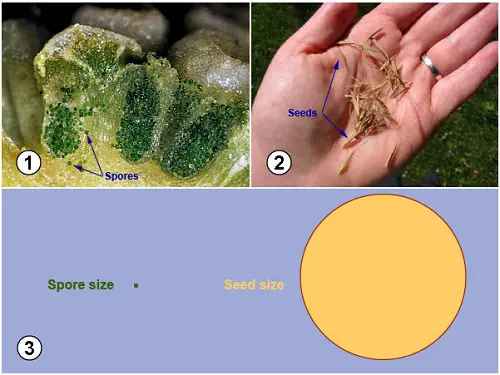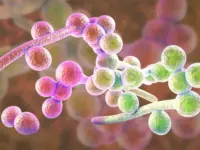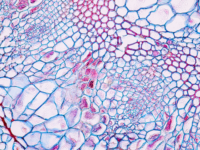
Introduction
There is some debate about if spores are really harmful to humans or not. Spores are structures that are formed and released by certain types of living organisms. Read further to learn more about what exactly spores are, which types of organisms form spores, and if any of the spores are dangerous.
What is spore and its types?
A spore is either a cell that is formed that plays a role in reproduction in certain organisms, or it is a resting stage that is formed that allows an organism to survive bad conditions.
Are spores alive?
A spore is a structure that is alive. It can give rise to some part of an organism, or form a new cell (in the case of bacteria).
Can spores survive in space?
Whether or not spores are able to survive in space depends on what type of spore it is. Experiments simulating a space environment have demonstrated that spores of the bacteria Bacillus subtilis can survive if UV radiation is not too high.
Are spores haploid or diploid?
Spores are haploid and are formed by mitotic divisions. Mitosis is a form of cell division that does not produce genetic variation in cells but simply produces two cells from a parental cell. This means that the parent cell of a spore is already haploid before division occurs.
What is a spore used for?
A spore is used for the purposes of asexual reproduction in the case of certain organisms like fungi and plants. For bacteria, a spore is a way for the cell to survive unfavorable and extreme environmental conditions.
How spores reproduce?
Spores play a role in reproduction in that in the case of plants and fungi, they are able to develop into an entirely new plant. Certain unicellular eukaryotic organisms, the protists, can also reproduce by spores.
Can spores survive high temperatures?
Some types of spores can survive relatively high temperatures. For example, many bacterial spores remain viable at temperatures up to about 45oC. Certain bacteria that are known as extremophiles can even survive and later grow at extremely high temperatures of 160oC. These types of cells are found in extreme conditions such as around volcanic vents in the ocean or in thermal springs.
Are spores dangerous?
Some types of spores are dangerous to people while others are not a problem. Fungal spores, in particular, can cause health problems if they are inhaled.
For example, fungal spores can cause breathing problems such as pneumonitis and are likely to worsen symptoms in people who have asthma. Fungal spores are also more dangerous for people who have a compromised immune system, such as occur in patients with HIV.
Inhaling certain bacterial spores like those of Anthrax can cause illness and death, especially when spores are modified for use as a bioweapon. These spores rapidly infect the person causing inhalation anthrax which compromises breathing ability and often causes death.
Spores of the protist malaria parasite Plasmodium are known as sporozoites and these are injected into people when bitten by a mosquito carrying the parasite. These spores cause malaria in the person who is infected.
How spores are formed?
Spores are formed in special structures called sporophytes or sporangia, in the case of plants and fungi. In bacteria, spores form by creating a thick layer around the cell wall.
What is spore of a plant?
Spores are most prevalent in lower plants that do not produce seeds. The spores of a moss plant are produced in a sporophyte structure. Each spore that is released can produce a little plant. This then forms a gametophyte that produces sex cells (gametes) for sexual reproduction.
What is an example of a spore?
An example of spores that many people see but may not recognize are those of ferns. Ferns produce sporangia on the undersides of the leaves. Each sporangium produces and contains several spores that when released help disperse the plant.
Are spores seeds?
Spores are not seeds. A seed is a structure that contains the embryonic form of a plant. It is also a multicellular structure that has its own food supply in the form of an endosperm. Plants that produce seeds evolved after primitive spore-producing plants and include the plant groups, gymnosperms and angiosperms.
How spore-bearing plants reproduce?
Spore-bearing plants are those that are more primitive and do not produce pollen or seeds. The moss and ferns fall in the category of spore-bearing plants. In both moss and ferns, spores are produced in specialized structures called sporophytes. The spores are released and then will develop into a little plant that produces a gametophyte. This is the part of the plant that is involved in producing gametes for sexual reproduction. Spore-bearing plants have an alternation of asexual and sexual reproduction.
Do fungi have spores?
Fungi do produce spores that help the organism to spread throughout the environment. It is important to remember that fungi include the slime molds, mushrooms, rusts, and yeasts. Spores play an integral role in the life cycle of fungal species.
Does yeast have spores?
Yeast species do produce spores as other fungi do. In fact, the yeast Saccharomyces makes spores through meiosis. The spores then contain these haploid nuclei.
Do mushrooms have spores?
Mushrooms do have spores that help the fungus to disperse. Mushrooms often produce spores under the cap. This cap section is called the basidiocarp of the fungus. The spores are housed between structures known as gills that are found on the underside of the basidiocarp.
Where are the spores on a morel mushroom?
Morel mushrooms produce structures called asci in which the individual spores are made. The asci are found on the part of the mushroom that is called the fruiting body. Spores are released from the asci and help to disperse the species of mushroom throughout the environment.
Summary
Spores are structures that can be created for reproduction purposes in some protists, fungi, and plants. Spores are sometimes produced and used as a resting stage in bacteria to survive extreme conditions. Only certain spores of protists, fungi, and bacteria are harmful to people, and more so for individuals who have a weak immune system.












Leave a Reply